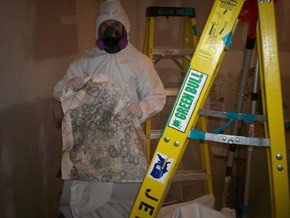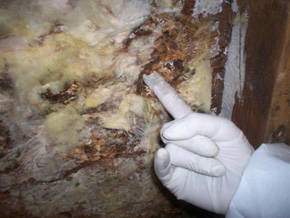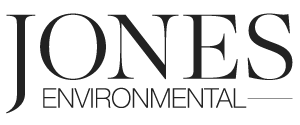In order for mold to grow four (4) elements come into play
- Low levels of ventilation
- Low levels of U.V. or Ultra Violet light (sunlight)
- High levels of moisture
- Food source (almost any matter with organic components: wood, paper, cloth etc.)
Mold is an essential element of the ecosphere and is present in all environments. It becomes an issue only when concentrated levels are found within relatively confined spaces or buildings (both commercial and residential). The two primary issues concerning high levels of mold in indoor environments are 1) Degradation of Structural Integrity and 2) Compromise of Human Health.
Degradation of Structural Integrity
Many modern construction/ building materials are highly susceptible to mold infestations. Semi-porous materials such as wood and concrete hold moisture long after an initial water incident has occurred. Mold growth begins in a period of 24-48 hours after moisture first comes into contact with the materials, if the conditions promote an atmosphere susceptible to mold growth. Once mold growth has begun structural degradation also commences hosting a number of other problems in the process. When mold is remediated, structural members, such as wood studs/ joists or decking, have to be treated in order to preserve the structural stability of the building. Otherwise mold will breakdown the organic matter of the structure until members of the structural unit have to be replaced or face potential failure (collapse) in the future.
Compromise of Human Health
 The complexity of the human immune system plays a role within the determination of “healthy” environments for humans concerning mold. Each person reacts in a different manner to mold. Some people feel the effects (eye and throat irritation, upper respiratory issues, headaches, etc.) at lower levels than others. For this reason the EPA has not established a Permissible Exposure Limit (PEL) for mold. There are no guidelines the law upholds in concern to healthy levels of mold. However some of the effects of exposure to mold are documented and known. Ranking amongst the highest of known dangers is lowered levels of immune response to bacterial infections. In other words individuals that are exposed to mold are more likely to become sick.
The complexity of the human immune system plays a role within the determination of “healthy” environments for humans concerning mold. Each person reacts in a different manner to mold. Some people feel the effects (eye and throat irritation, upper respiratory issues, headaches, etc.) at lower levels than others. For this reason the EPA has not established a Permissible Exposure Limit (PEL) for mold. There are no guidelines the law upholds in concern to healthy levels of mold. However some of the effects of exposure to mold are documented and known. Ranking amongst the highest of known dangers is lowered levels of immune response to bacterial infections. In other words individuals that are exposed to mold are more likely to become sick.
Jones Environmental, Inc. (JEI) offers a variety of services provided by specialized environmental professionals to bring solutions to the issues that face buildings (residential and commercial) and their owners. The following are some examples of the work types JEI is available to perform:
Mold Assessment – JEI’s staff includes Certified Mold Inspectors (CMI) and Certified Industrial Hygienists (CIH) to asses the mold hazards that may exist within any environment. The most recent and up to date equipment, technology and studies are applied on each job to ensure that clients are informed of any problems that exist or pose a potential threat in the future.
Some other services JEI offers are Mold Remediation Project Planning/ Consulting, Project Management and Indoor Air Quality Assessments
JEI offers their services to residential and commercial customers alike.
 Mold Remediation – JEI has established a team of qualified individuals that can service any remediation project no matter the scale of the task. On-staff are Certified Mold Remediators (CMR) that have been trained to implement the most efficient means of remediation possible for any situation.
Mold Remediation – JEI has established a team of qualified individuals that can service any remediation project no matter the scale of the task. On-staff are Certified Mold Remediators (CMR) that have been trained to implement the most efficient means of remediation possible for any situation.
Some other services JEI offers are Mold Remediation Project Planning/ Consulting, Project Management and Indoor Air Quality Assessments
JEI offers their services to residential and commercial customers alike.


